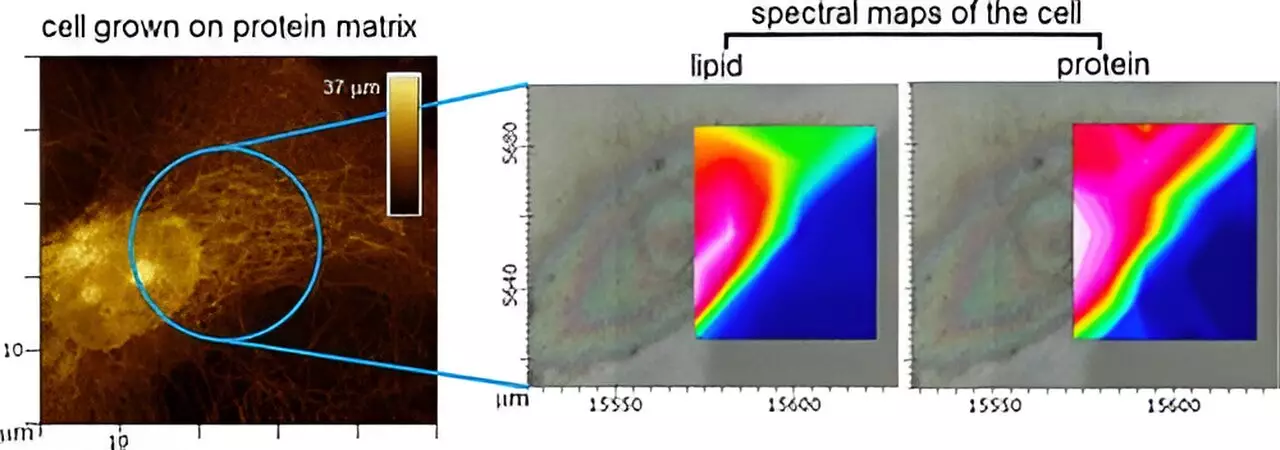Understanding the chemistry of human cells and how it changes based on their extracellular niche is crucial for determining cell responses and development pathways. The human body renews itself by differentiating stem cells into primary cells that form tissues in response to their environment. This environment is shaped by extracellular matrices or scaffolds that provide the foundation for tissue and organ formation.
While microscopy and biological assays are useful tools for evaluating cell responses to matrices, they do not provide a comprehensive understanding of the chemistry of cells and how it evolves at different cell-matrix interfaces. This lack of chemical information hinders progress in healthcare and technology innovation, as cellular chemistry plays a vital role in tissue growth and repair processes.
To bridge this gap, scientists at NPL embarked on a study in collaboration with Diamond Light Source to map the Infrared spectra of human primary and stem cells grown on both native and synthetic matrices. Infrared spectroscopy offers a wealth of chemical information within cells, but distinguishing between cells and matrices or identifying specific cell components poses a challenge. A correlative approach utilizing physical imaging techniques such as light and atomic force microscopy was employed to guide the analysis of chemical spectra.
The study involved a multidisciplinary team of researchers from NPL, Diamond Light Source, universities in Sheffield and London, and data experts from Cambridge. Together, they developed a spectral imaging approach that not only allowed them to create chemical maps of individual cells but also compare the chemical signatures of cells grown on different matrices with varying physical properties. This collaborative effort shed light on how the chemical composition of human cells correlates with the molecular scaffolds supporting their growth and development.
The findings of the study demonstrate the effectiveness of correlative measurements in elucidating cell behavior at cell-matrix interfaces in two dimensions. However, there is a pressing need to develop more advanced methodologies for analyzing cell-matrix interactions in three dimensions. These advancements have the potential to revolutionize healthcare by providing insights into human tissue regeneration processes and paving the way for innovative solutions in the field.
Overall, the study represents a significant step towards understanding the complex interplay between extracellular matrices and human cell chemistry, highlighting the importance of integrating chemical and physical analyses to unravel the mysteries of cellular behavior and tissue development.



Leave a Reply